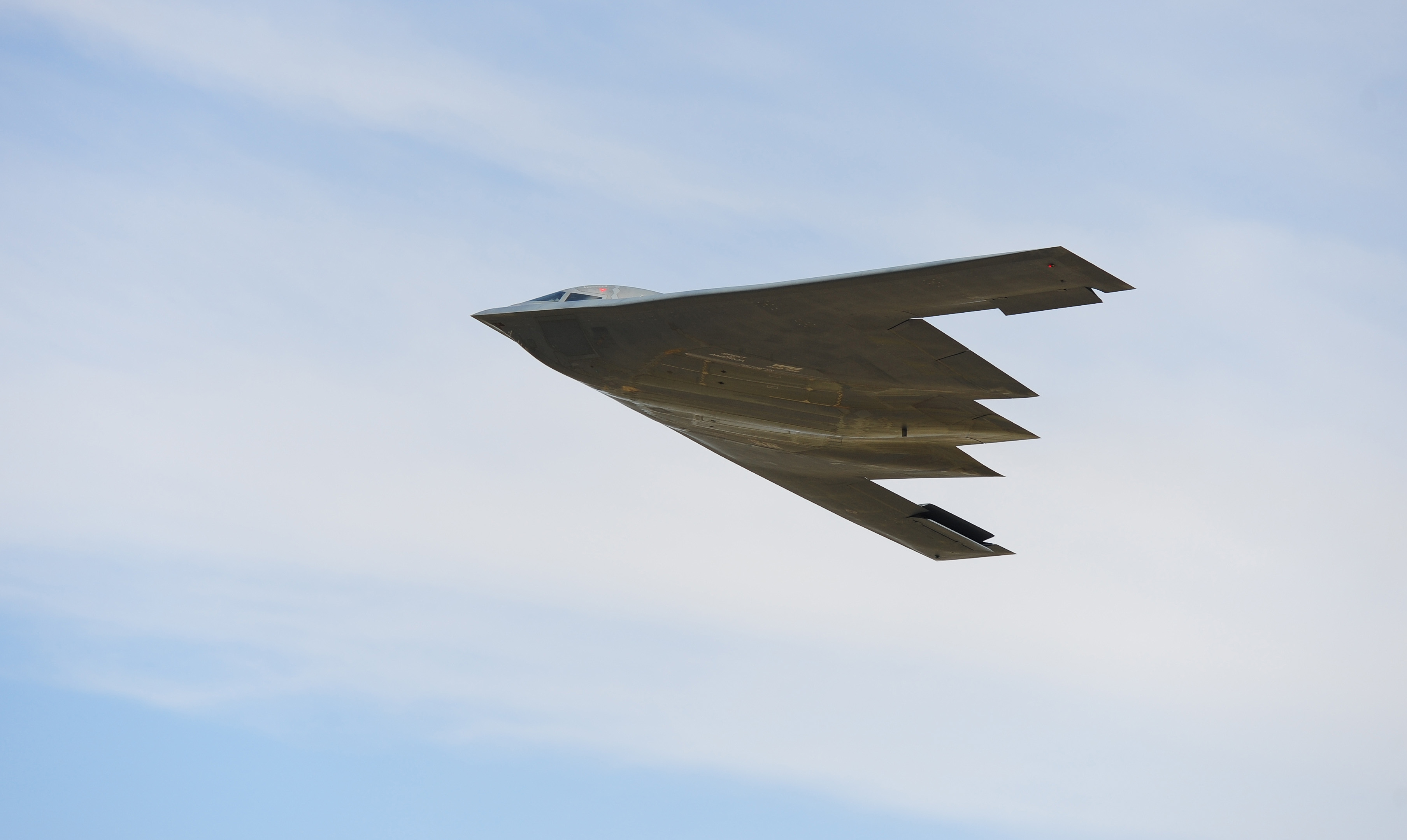
The Spirit of America, a B-2 Spirit, soars through the sky at Whiteman AFB, Mo., July 25, 2013. Air Force photo by SSgt. Nick Wilson.
Rebecca Grant
July 30, 2014—The B-2s at Whiteman AFB, Mo., are logging more hours than ever as they train for their wide range of conventional and strategic missions, officials said.
B-2 pilots flew 142 sorties totaling 839.3 hours in April 2014, a peacetime record for 20 operational B-2s. The previous record was 665.4 hours, set in March 2011.
In June, two B-2s deployed to RAF Fairford, England. A move made in part to assure European allies weary of further Russian aggression following the annexation of Crimea.
“You can message pretty strongly with this platform,” said 509th Bomb Wing Commander Brig. Gen. Glen D. VanHerck in a July 23 interview.
“The training and integration of strategic forces demonstrates to our nation’s leaders and our allies that we have the right mix of aircraft and expertise to respond to a variety of potential threats and situations,” Adm. Cecil Haney, commander, US Strategic Command, said at the time.
The Air Force also is slated to deploy B -2s soon to Alaska, where they will exercise with F-22 Raptors, a move VanHerck called “an education for both” platforms. The stealth pilots profit from expanding tactics and building relationships, he added.
“Until you debrief together you don’t really learn,” he said.
B-2s have been at Whiteman for 21 years and the newest B-2 is 15 years old. As the fleet ages, the 509th must predict which parts will fail, and find replacements. Cannibalization of parts from B-2s in depot is common practice. Sixteen B-2s are combat-coded at Whiteman, three rotate through the Northrop Grumman depot line in Palmdale, Calif., and one B-2 is instrumented for test work.
“My biggest concern is to maintain aircraft availability,” said VanHerck.
From a tactical perspective, the B-2 is very robust.
“The threat continually evolves,” he noted. “We have to keep the B-2 tactically viable and not rest on our laurels.”
In some scenarios, that includes support from the Navy’s EA-6B Prowler and EA-18G Growler.
“We rely on support assets for enhanced survivability,” said VanHerck.
The 509th’s biggest handicap remains the small numbers of B-2s.
“We have to have the new bomber,” VanHerck said. “Our strategy points to more emphasis on the long-range strike mission.”
Rebecca Grant is president of IRIS Independent Research. Her most recent article for Air Force Magazine was “China Flies” in the July issue.